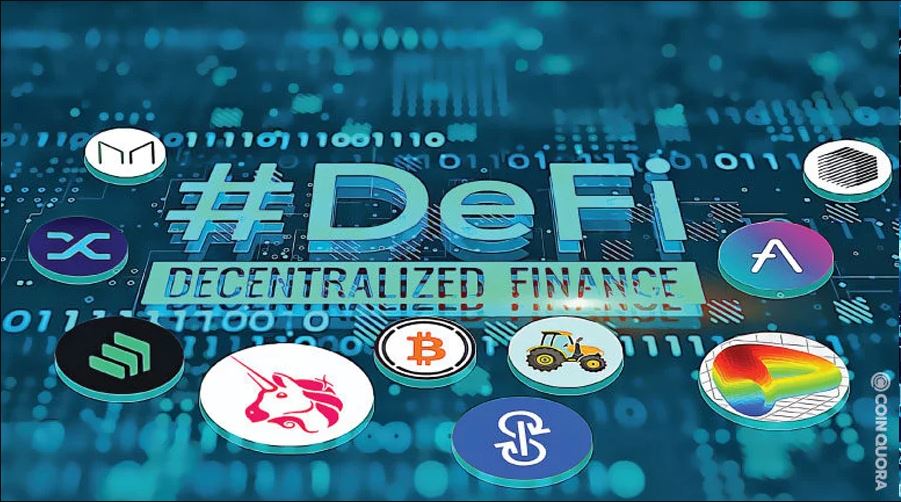
DeFi -Decentralized Finance on dark blue abstract polygonal background. Concept of blockchain, decentralized financial system.
Introduction
Decentralized Finance, or DeFi, has emerged as a transformative force in the cryptocurrency world. Built on blockchain technology, DeFi seeks to replace traditional financial systems with decentralized, transparent, and accessible alternatives. This article explores how DeFi is reshaping finance, its core components, and the impact it has on the industry.
Understanding DeFi
DeFi stands for Decentralized Finance and encompasses a range of financial applications that operate on blockchain networks, primarily Ethereum. Unlike traditional financial systems that rely on intermediaries like banks, DeFi uses smart contracts—self-executing contracts with terms directly coded into the blockchain—to facilitate transactions without central authorities. Key principles of DeFi include decentralization, transparency, interoperability, and accessibility, which collectively aim to democratize financial services and reduce reliance on traditional financial institutions.

Core Components of DeFi
At the heart of DeFi are several core components. Decentralized exchanges (DEXs) allow users to trade cryptocurrencies directly without intermediaries, using smart contracts for transactions. Lending and borrowing platforms enable users to earn interest on deposits and secure loans by providing collateral, all managed through decentralized protocols. Stablecoins, which are cryptocurrencies pegged to assets like fiat currency, provide stability and a reliable medium of exchange within the DeFi ecosystem. Yield farming and staking are popular practices in DeFi, where users provide liquidity or lock up assets to earn rewards. Additionally, DeFi insurance platforms offer coverage for risks such as smart contract failures and hacking incidents, using decentralized governance for claims management.
The Impact on Traditional Finance
DeFi is disrupting traditional finance by removing intermediaries, which lowers costs and increases efficiency. It also enhances financial inclusion, offering services to those excluded from the traditional banking system. DeFi introduces innovative financial products and services that challenge conventional models, promoting transparency and security through blockchain technology. However, the rise of DeFi also presents challenges, including regulatory uncertainty, smart contract vulnerabilities, scalability issues, and market volatility.

Challenges and Risks
The rapid growth of DeFi has attracted regulatory attention, and the evolving regulatory landscape could impact its development. While smart contracts enhance security, they are not immune to bugs and vulnerabilities that could lead to financial losses. DeFi platforms, particularly those on Ethereum, face scalability challenges that can result in high transaction fees and network congestion. Additionally, the high volatility of cryptocurrencies and DeFi tokens adds another layer of risk for users and investors.
The Future of DeFi
Looking ahead, DeFi is likely to see continued advancements and greater integration with traditional financial systems. Cross-chain solutions will improve interoperability between different blockchains, while clearer regulations may provide stability and attract more institutional investment. Innovations in financial products and services will drive new opportunities and use cases within DeFi, contributing to its ongoing evolution.





